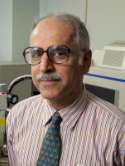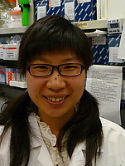Common and distinct DNA-binding and regulatory activities of the BEN-solo transcription factor family Journal Article
| Authors: | Dai, Q.; Ren, A.; Westholm, J. O.; Duan, H.; Patel, D. J.; Lai, E. C. |
| Article Title: | Common and distinct DNA-binding and regulatory activities of the BEN-solo transcription factor family |
| Abstract: | Recently, the BEN (BANP, E5R, and NAC1) domain was recognized as a new class of conserved DNA-binding domain. The fly genome encodes three proteins that bear only a single BEN domain (‘‘BEN-solo’’ factors); namely, Insensitive (Insv), Bsg25A (Elba1), and CG9883 (Elba2). Insv homodimers preferentially bind CCAATTGG palindromes throughout the genome to mediate transcriptional repression, whereas Bsg25A and Elba2 heterotrimerize with their obligate adaptor, Elba3 (i.e., the ELBA complex), to recognize a CCAATAAG motif in the Fab-7 insulator. While these data suggest distinct DNA-binding properties of BEN-solo proteins, we performed reporter assays that indicate that both Bsg25A and Elba2 can individually recognize Insv consensus sites efficiently. We confirmed this by solving the structure of Bsg25A complexed to the Insv site, which showed that key aspects of the BEN:DNA recognition strategy are similar between these proteins. We next show that both Insv and ELBA proteins are competent to mediate transcriptional repression via Insv consensus sequences but that the ELBA complex appears to be selective for the ELBA site. Reciprocally, genome-wide analysis reveals that Insv exhibits significant cobinding to class I insulator elements, indicating that it may also contribute to insulator function. Indeed, we observed abundant Insv binding within the Hox complexes with substantial overlaps with class I insulators, many of which bear Insv consensus sites. Moreover, Insv coimmunoprecipitates with the class I insulator factor CP190. Finally, we observed that Insv harbors exclusive activity among fly BEN-solo factors with respect to regulation of Notch-mediated cell fate choices in the peripheral nervous system. This in vivo activity is recapitulated by BEND6, a mammalian BEN-solo factor that conserves the Notch corepressor function of Insv but not its capacity to bind Insv consensus sites. Altogether, our data define an array of common and distinct biochemical and functional properties of this new family of transcription factors. |
| Keywords: | controlled study; unclassified drug; nonhuman; animal cell; mammalia; notch receptor; transcription factor; cell fate; drosophila; in vivo study; gene control; dna binding; recognition; peripheral nervous system; hox protein; multigene family; consensus sequence; repressor; ben-solo; insulator element; insulator; ben protein; article; insect genome |
| Journal Title: | Genes and Development |
| Volume: | 29 |
| Issue: | 1 |
| ISSN: | 0890-9369 |
| Publisher: | Cold Spring Harbor Laboratory Press |
| Date Published: | 2015-01-01 |
| Start Page: | 48 |
| End Page: | 62 |
| Language: | English |
| DOI: | 10.1101/gad.252122.114 |
| PROVIDER: | scopus |
| PMCID: | PMC4281564 |
| PUBMED: | 25561495 |
| DOI/URL: | |
| Notes: | Export Date: 2 February 2015 -- Source: Scopus |
Altmetric
Citation Impact
BMJ Impact Analytics
Related MSK Work







